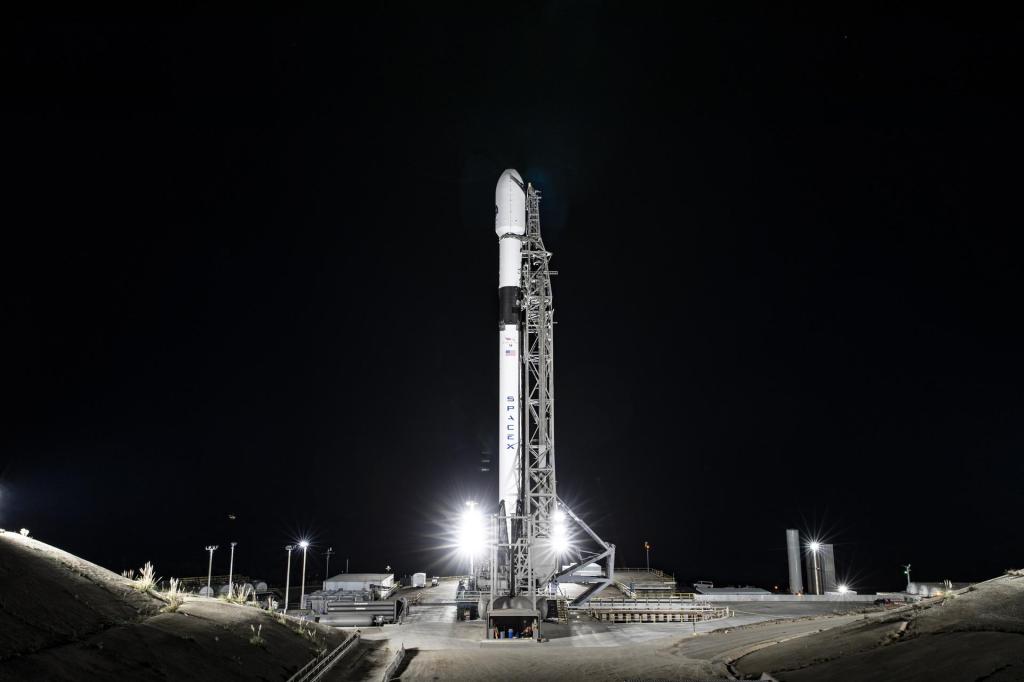The first demonstration flight of SpaceX’s Falcon Heavy rocket took place on Feb. 6, 2018, from Launch Pad 39A at NASA’s Kennedy Space Center in Florida. The flight placed a Tesla Roadster, attached to its second stage, into solar orbit as far as the orbit of Mars. To date, four other flights have followed that first successful mission, launching payloads for commercial customers and the U.S. government. In the coming years, NASA has contracted with SpaceX for several Falcon Heavy rockets on various missions to launch a spacecraft to an asteroid, an Earth environmental monitoring satellite, a spacecraft to study Jupiter’s moon Europa, a lunar lander and rover, an infrared space telescope, and the first elements of the lunar orbiting Gateway.
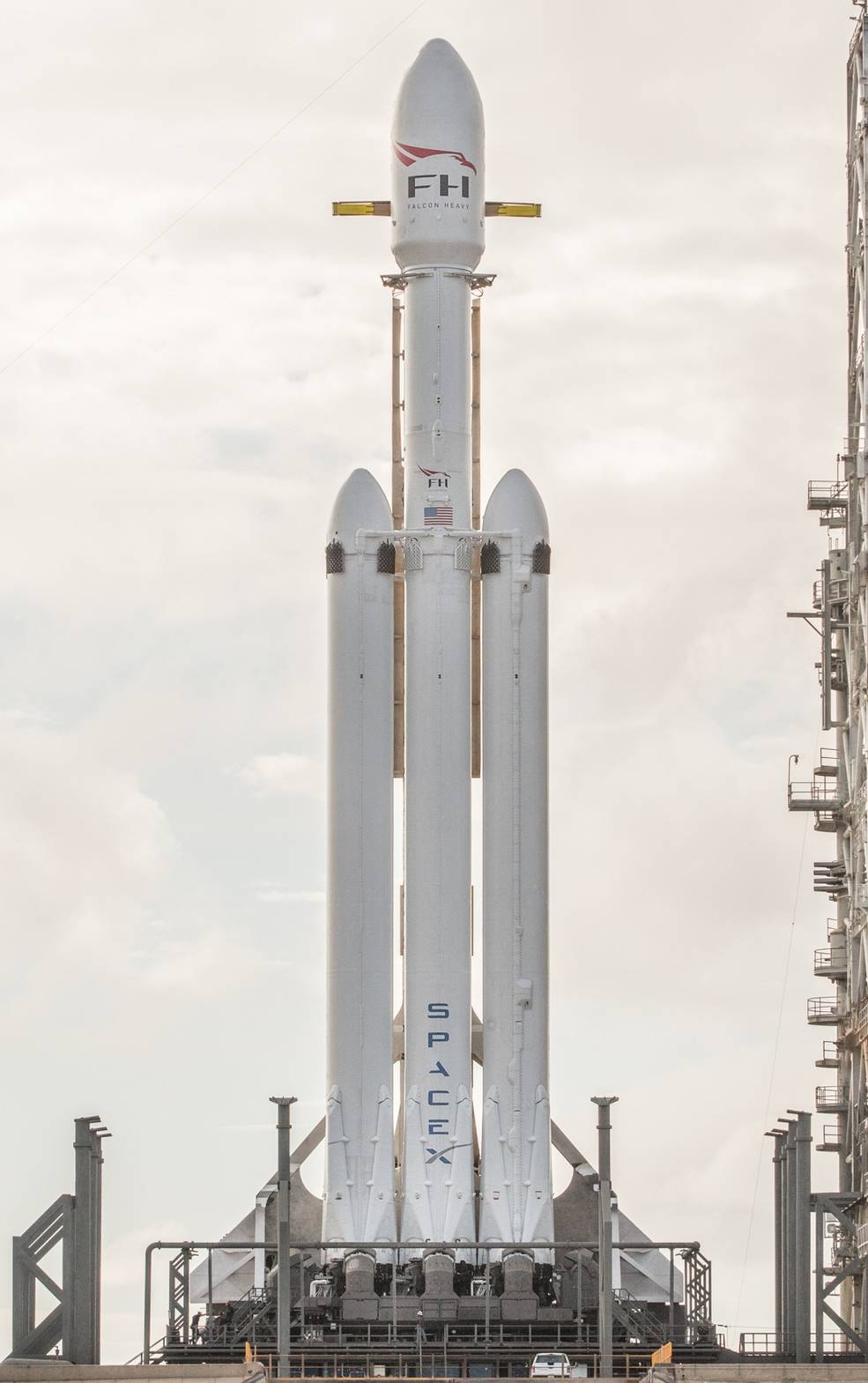
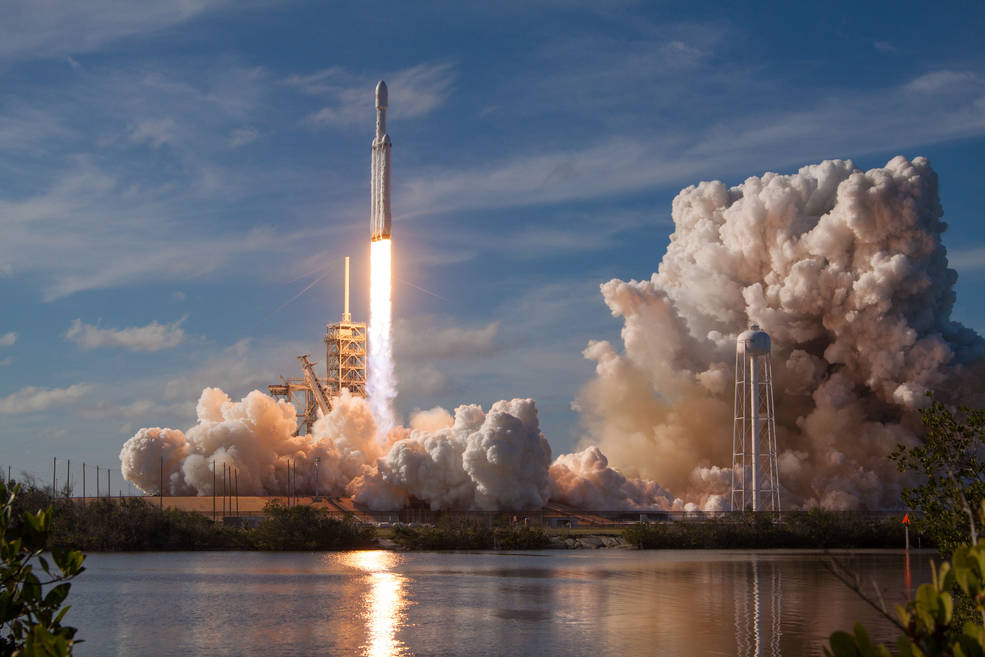
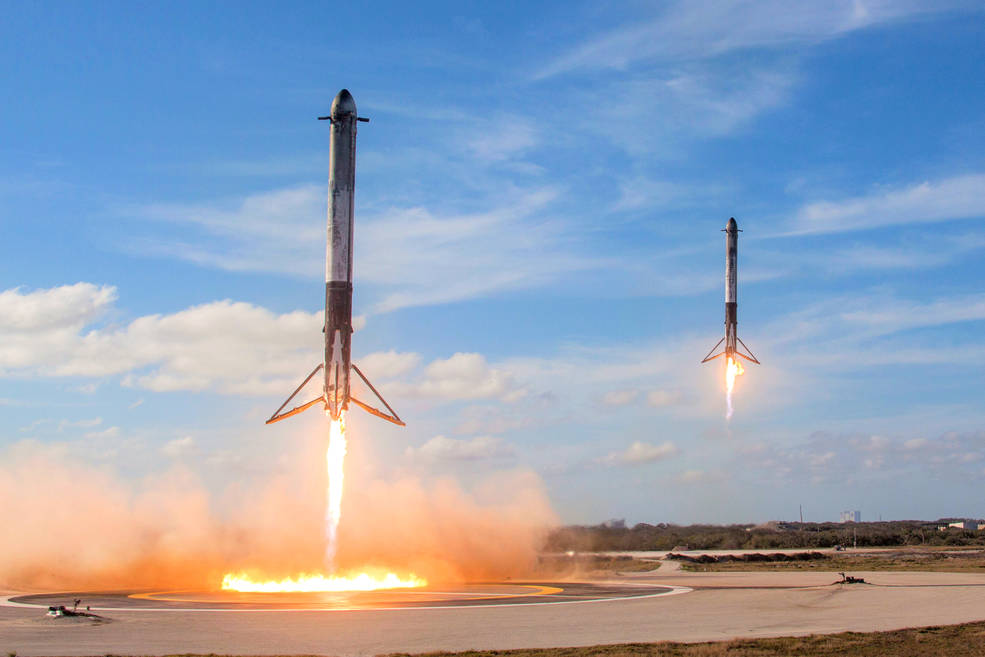
Left: The first Falcon Heavy sits on Launch Pad 39A at NASA’s Kennedy Space Center in Florida before its demonstration flight.
Middle: Liftoff of the Falcon Heavy on its demonstration flight. Right: The two Falcon Heavy side boosters make their
landings at Cape Canaveral Air Force Station, now Cape Canaveral Space Force Station.
Credit: Images courtesy SpaceX.
The Falcon Heavy comprises three reusable Falcon 9 first stage boosters strapped together side by side. The combination created the most powerful operational rocket at the time, its 27 Merlin engines combined generating more than 5 million pounds of thrust, enough to place 141,000 pounds into a low inclination Earth orbit or send 37,000 pounds to Mars. The demonstration Falcon Heavy lifted off from Launch Pad 39A in the afternoon of Feb. 6, 2018. Following burnout and jettison, the two side boosters made spectacular parallel touchdowns at Landing Zones 1 and 2 at Cape Canaveral Air Force Station, renamed Cape Canaveral Space Force Station in December 2020. Two of the center core’s engines failed to ignite for the landing burn, preventing recovery of that stage on the drone ship out in the Atlantic Ocean. For this demonstration flight, the Falcon Heavy carried a Tesla Roadster as its only payload, permanently attached to the rocket’s second stage. A mannequin dubbed Starman sat at the wheel of the Tesla, wearing a SpaceX launch and entry suit.
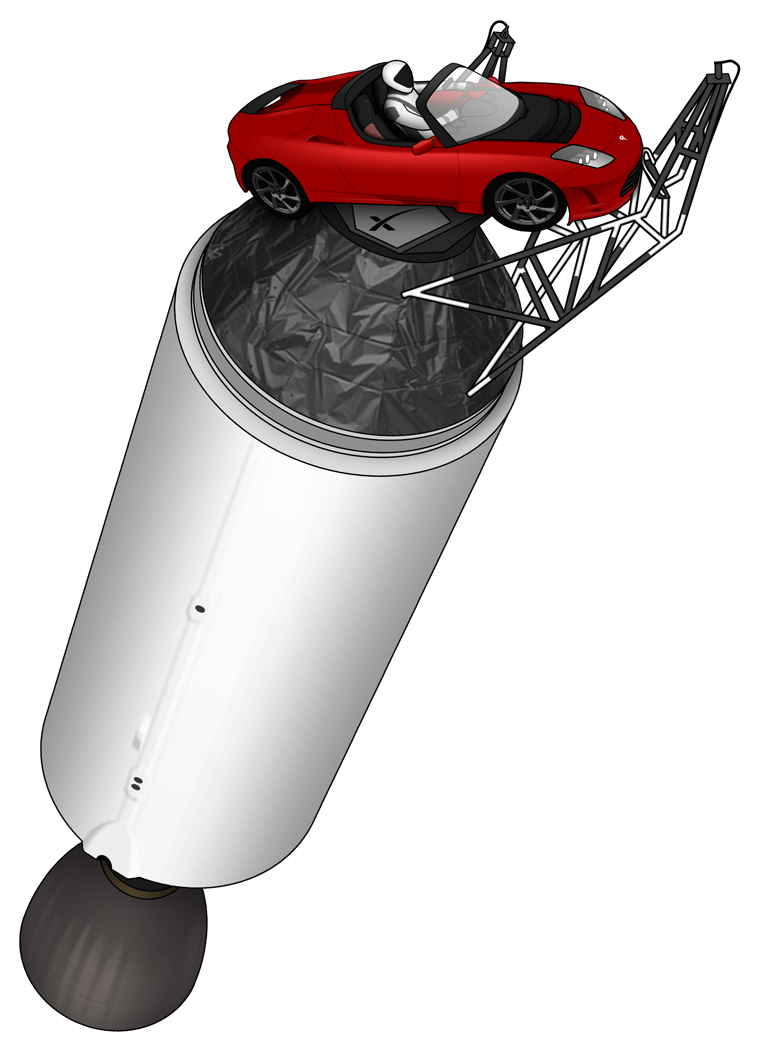
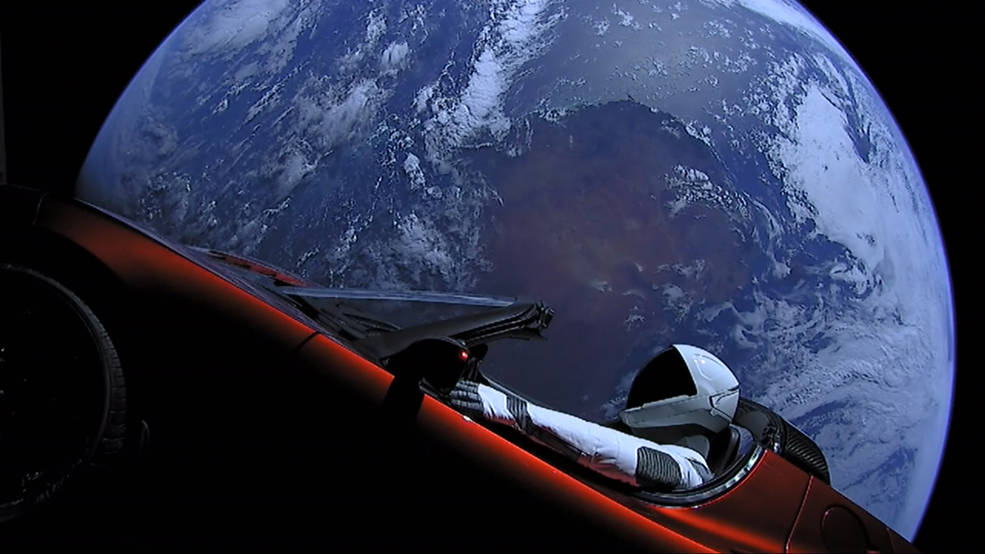
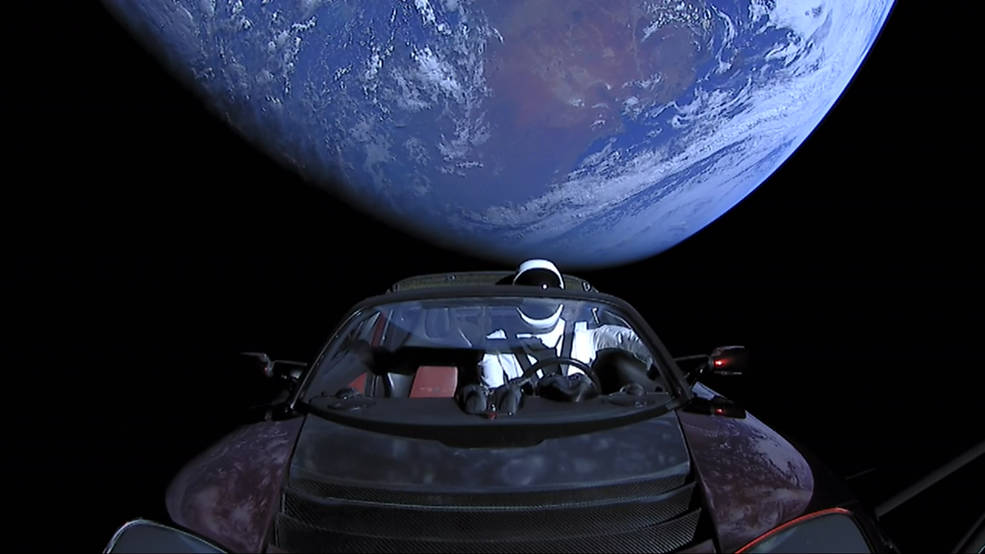
Left: Illustration showing the Tesla Roadster affixed to the Falcon Heavy’s upper stage. Middle: View of the Starman
sitting in the Tesla Roadster, as seen from the port camera, in its Earth parking orbit.
Right: The Starman in the Tesla as seen from the forward camera.
Credit: Images courtesy SpaceX.
The Falcon Heavy’s upper stage, with the attached Tesla Roadster, entered an elliptical parking orbit around the Earth, passing through the planet’s Van Allen radiation belts. The onboard cameras continued to livestream images of the Starman and the Tesla with the Earth in the background until the batteries died four after launch. Two hours later, the second stage reignited to send it and the Tesla into a heliocentric orbit with its farthest point past the orbit of Mars, although no encounter with the Red Planet was planned or even possible. In October 2020, the Tesla passed within five million miles of Mars, too distant for the planet’s gravity to affect the car’s orbit.
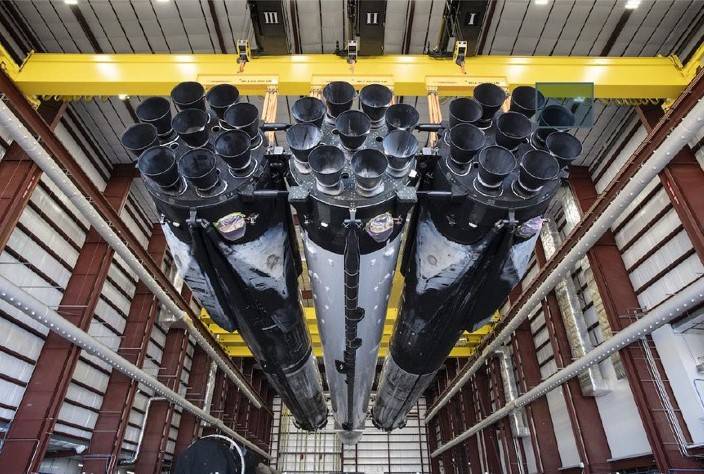
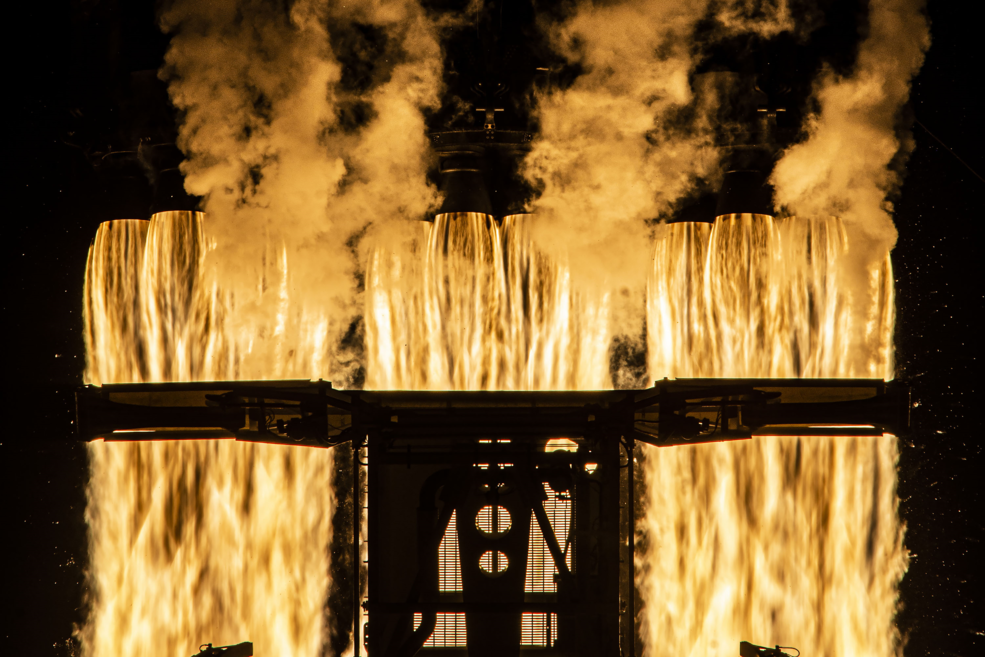
Left: View of the 27 Merlin engines in the three booster cores in the SpaceX integration
facility at Launch Pad 39A at NASA’s Kennedy Space Center in Florida.
Right: View of the 27 Merlin engines firing seconds after liftoff.
Credit: Images courtesy SpaceX.
The Falcon Heavy has flown four missions since the demonstration flight, launching payloads for a commercial customer and for the Department of Defense (DOD). On April 11, 2019, the second Falcon Heavy placed the Arabsat-6A communications satellite into a geosynchronous transfer orbit. The third flight on June 26, 2019, placed 25 satellites into orbit, comprising the STP-2 payload for the DOD’s Space Test Program. On Nov. 1, 2022, and Jan. 15, 2023, the fourth and fifth Falcon Heavy boosters launched the USSF-44 and USSF-67 payloads, respectively, for the U.S. Space Force.
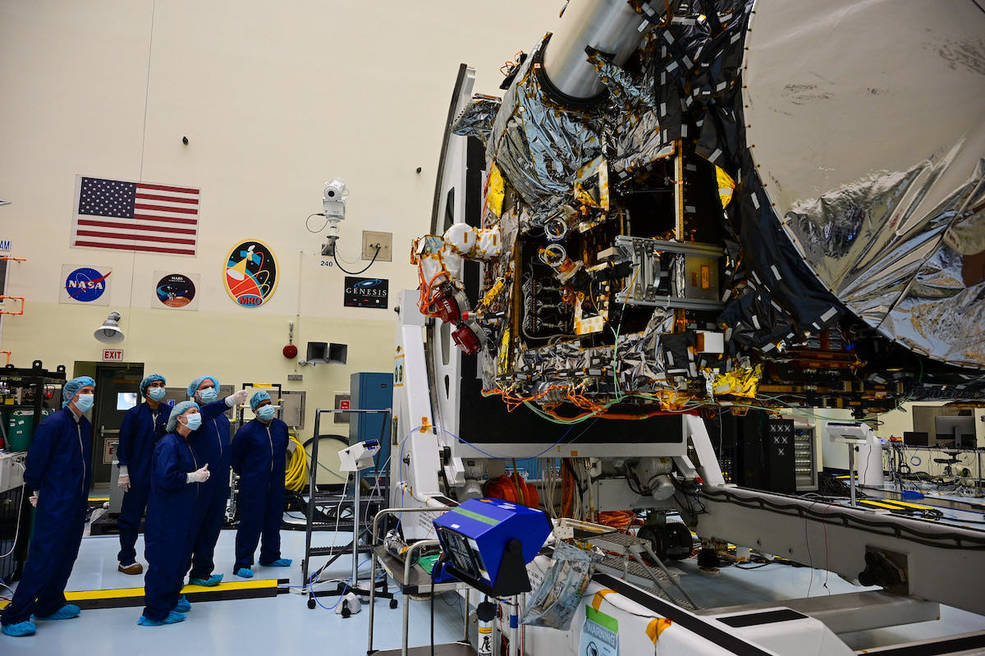
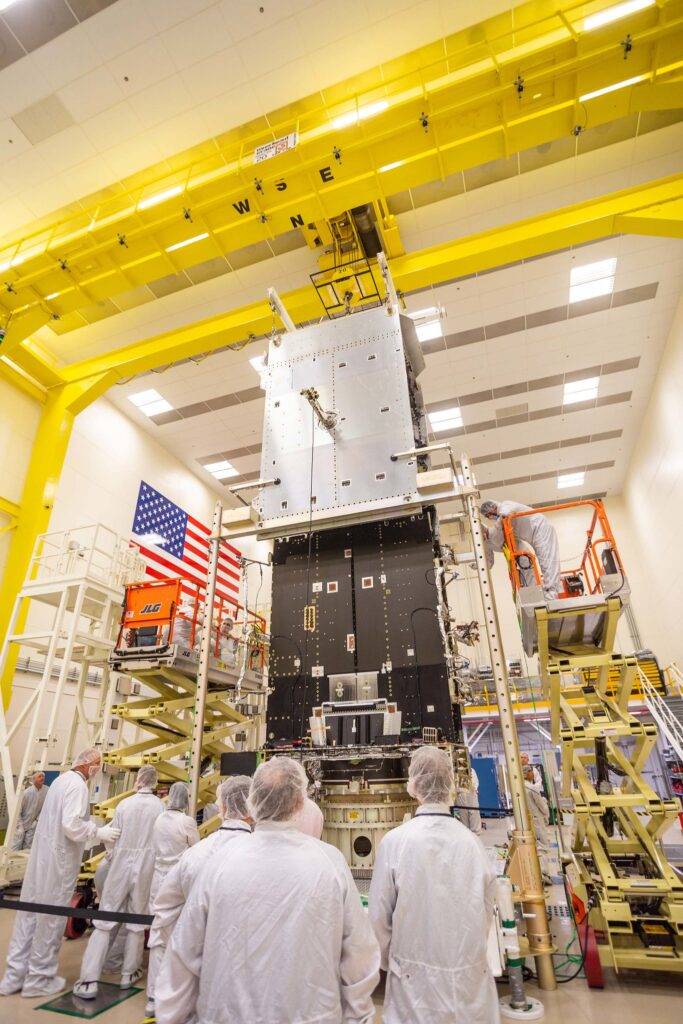
Left: NASA Deputy Administrator Pamela D. Melroy, third from left, inspecting the Psyche spacecraft
at NASA’s Kennedy Space Center in Florida. Right: Engineers at the Lockheed Martin Space facility
in Littleton, Colorado, assemble the GOES-U environmental monitoring satellite.
Credit: Image courtesy Lockheed Martin.
In addition to commercial customers, NASA has also contracted for future Falcon Heavy launches. The Psyche spacecraft, currently planned for a Falcon Heavy launch in October 2023, will explore the metal-rich asteroid of the same name. Selected as part of NASA’s Discovery Program in 2017 and managed by NASA’s Jet Propulsion Laboratory (JPL) in Pasadena, California, Psyche will use solar electric propulsion to reach its destination in 2029, entering orbit around the asteroid for 21 months of observations. Planned for launch on a Falcon Heavy no earlier than April 2024, the GOES-U satellite, operated by the National Oceanic and Atmospheric Administration, is the fourth and final in the GOES-R series, extending the operations of the Geostationary Operational Environmental Satellite system until 2036.
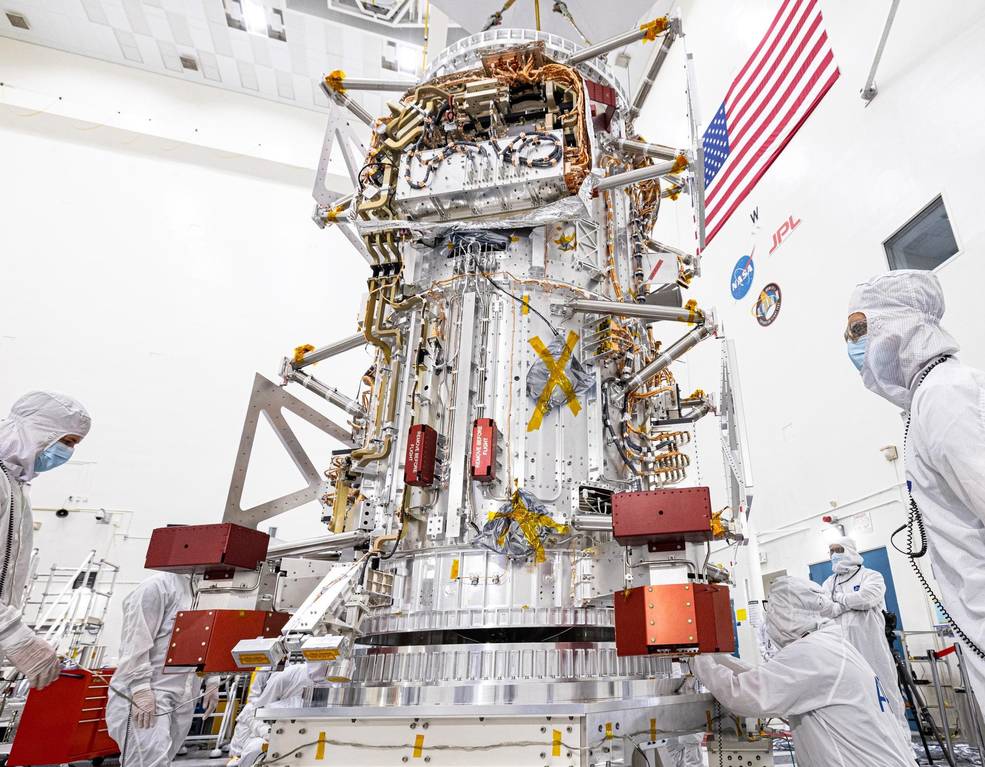
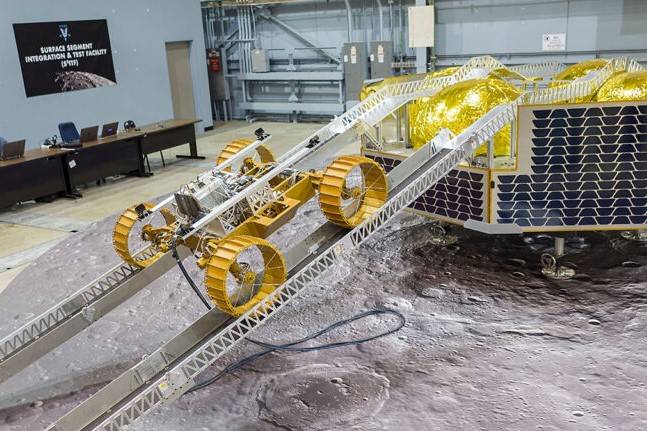
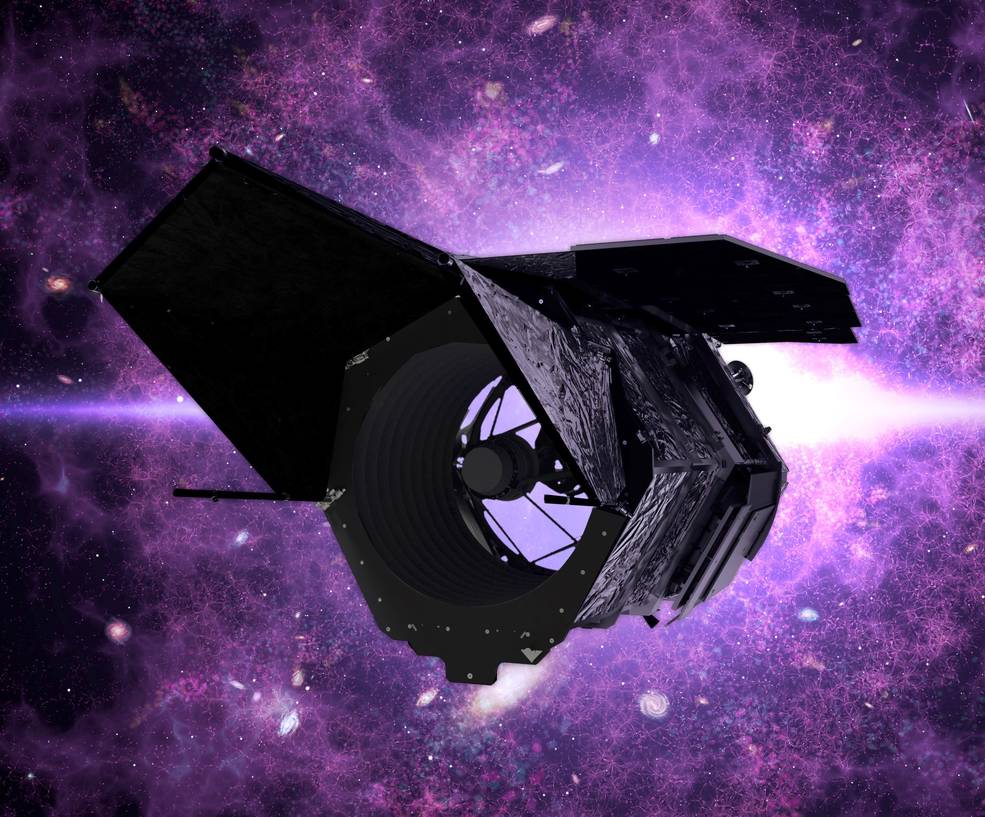
Left: Engineers at NASA’s Jet Propulsion Laboratory in Pasadena, California, inspect the Europa Clipper spacecraft.
Middle: During egress testing at NASA’s Johnson Space Center in Houston, the VIPER rover descends from its
Griffin lander. Right: Illustration of the Nancy Grace Roman Space Telescope.
Selected by NASA’s Planetary Science Division, the Europa Clipper mission will explore Jupiter’s icy moon Europa. Jointly managed by JPL and the Johns Hopkins University’s Applied Physics Laboratory, Europa Clipper will launch on a Falcon Heavy during a 21-day window in October 2024. Using gravity assists from Mars and Earth, the spacecraft will enter orbit around Jupiter in April 2030. During its 3.5-year mission, it will make 44 flybys of Europa, coming as close as 16 miles, for detailed photography and other scientific studies. As part of its Commercial Lunar Payload Services program, NASA selected Astrobotics Technology of Pittsburgh to develop the Volatiles Investigating Polar Exploration Rover (VIPER) and its Griffin lander. Managed by NASA’s Science Mission Directorate, the combined spacecraft will launch aboard a Falcon Heavy no earlier than November 2024 and make a landing in the Moon’s south polar region. VIPER will support NASA’s Artemis program to land the first woman and the first person of color on the Moon. NASA’s Ames Research Center in California’s Silicon Valley manages the VIPER project, with NASA’s Johnson Space Center (JSC) in Houston building the rover. A Falcon Heavy rocket will lift NASA’s Nancy Grace Roman Space Telescope no later than May 2027. Previously known as the Wide Field InfraRed Survey Telescope, Roman will tackle outstanding questions in cosmology, including the effects of dark energy and dark matter, and exoplanet exploration.
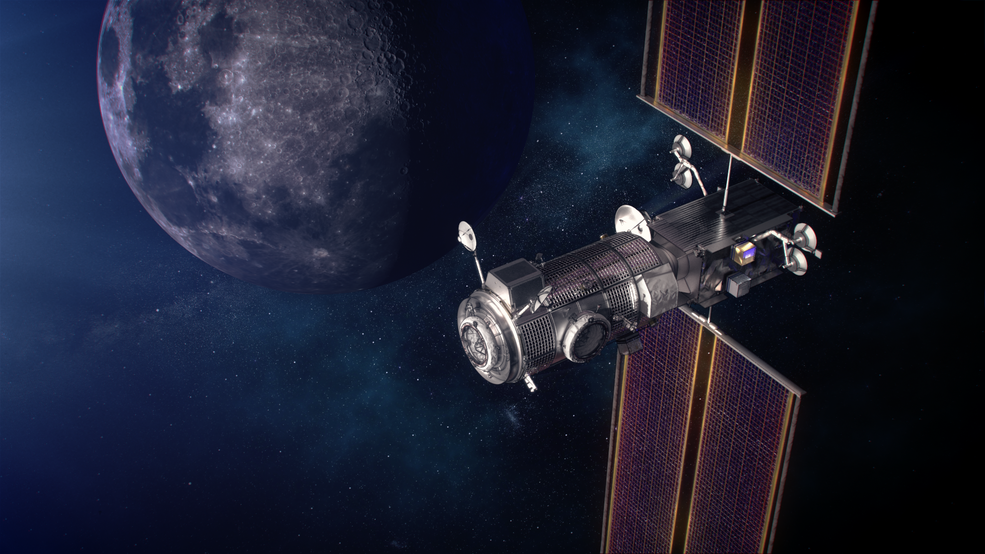
Illustration of the Gateway’s Habitation and Logistics Outpost (HALO), left,
and Power and Propulsion Element (PPE) modules, planned for a
tandem launch aboard a Falcon Heavy.
On Feb. 9, 2021, NASA selected the Falcon Heavy as the launch vehicle for the initial two elements of the Gateway outpost in lunar orbit. The two modules, the Habitation and Logistics Outpost (HALO) and the Power and Propulsion Element (PPE), will launch integrated as a single unit no earlier than 2024. NASA’s JSC manages the Gateway program, to serve as a rendezvous point for Artemis astronauts traveling to lunar orbit aboard Orion spacecraft and then transiting onto the lunar surface. The HALO module, built by Northrop Grumman Space Systems of Dulles, Virginia, will support science investigations, distribute power, provide communications for visiting vehicles and lunar surface expeditions, and supplement the life support systems of Orion spacecraft. The PPE module, built by Maxar Technologies of Westminster, Colorado, will provide power, high-speed communications, attitude control, and the capability to move the Gateway to different lunar orbits. Falcon Heavy boosters will launch supplies to the Gateway as part of NASA’s Gateway Logistics Services contract.









